It can be fun to breed your own zinnias - Part 33
zen_man
8 years ago
Featured Answer
Sort by:Oldest
Comments (106)
zen_man
8 years agolast modified: 8 years agozen_man
8 years agolast modified: 8 years agoRelated Discussions
It can be fun to breed your own zinnias - Part 3
Comments (40)Pls8xx, "One thing that has been on my mind the last few weeks is how important it is to me that a zinnia have a short compact plant form. I grow in a sand/clay mix rather than topsoil. It will hold plants upright fine when dry, but when wet the soil looses its strength and the tall plants become vulnerable to wind knocking them over." You have made a good case that you do need zinnias with a more compact plant habit. Last year, we had a very violent storm with high winds of 50mph and it blew down literally dozens of my zinnias. I had concrete re-bar tomato cages around a few of my more critical "breeders" and they were protected. But many of my big zinnia plants snapped off at the ground and many more lost their basal branches and some lateral branches. Interestingly, some of my big bushy scabiosa flowered zinnias and most of those F1s with a "scabi" parent came through just fine, with amazing resistance to the high winds. As is usual in a high wind storm here, for a period of hours we lost our electrical power, our telephone land line, and our cable connection. I studied the wreckage in my zinnia patch to see "what went wrong" structurally with my zinnias. As is usual for me, there were some surprises. I plan to apply what I learned from my "crash investigation" to make better decisions about plant structure this year. For one thing, I had planted a lot of Burpeeanas, from both Burpee and from Stokes. I had a lot of "out of the seed packet" Burpeeanas and some F1 hybrids from crosses that I made between Burpeeanas. (Incidentally, your picture of the "original" red Burpeeanas shows just how nice that Burpeeana bushy look can be.) To my amazement, some of the most disastrous structural failures were in my Burpeeanas. They have what I refer to as a "candelabra" stem structure, with basal branches coming out from the main stem at a 90 degree angle. Even though the stems look thick and strong, there is a kind of "joint" at the attachment point. Some of the basal branches that were in contact with the soil had actually sprouted roots and were apparently in the process of becoming independent plants. It's almost as if the stem joint was "willing" to detach from the main stem. But even higher up, those branches that cantilevered out from the main stem at a 90-degree angle seemed inherently weak. In almost all cases, the branches broke at their attachment points to the main stem. The plants that seemed resistant to branches breaking off had their branches leaving the main stem at a much more acute angle, like 45 or even 30°. So their branches were headed upward at the attachment point. For whatever reason, those branches seemed much better attached, even if the plant habit was more generally upward than outward. Despite the fragility of the Burpeeana plants in high winds, I plan to continue growing them and selecting the best flowers and plants. I will just be looking for stronger attachment points for their branches. If you want to emphasize compactness in your zinnia breeding, you can start with some strains that are already compact and cross some other zinnias with them. I personally have quit crossing the lower growing zinnias because I don't like kneeling and bending over to do my cross pollinating. I've always had a tendency toward lower back pain from my gardening, and a lot of bending over just aggravates it. However, short zinnias are interesting looking and fascinating in crosses, so I am thinking about constructing some really high raised beds that might bring those short zinnias up to a more comfortable working distance. There are some short zinnias that you can cross with tall zinnias that will produce some intermediate compact F1 hybrids, and the F2s from them should sort out into a wide range of plants that you could pick from for further breeding. Three of the shortest are the Thumbelina zinnia, the Zinnita zinnia, and Zinnia Short Stuff. Here is another view of Short Stuff and here is another seed source: Short Stuff at New England seed. Some taller but still very compact zinnias are Zinnia Swizzle cherry and ivory, Zinnia Swizzle scarlet and yellow, Zinnia Dreamland hybrids, Zinnia Magellan mix, and I just found that Zinnia Peter Pan mix is apparently still available. By crossing some of those compact zinnias with other zinnias you should have the basis for creating several new strains of compact zinnias, with various degrees of compactness. MM...See MoreIt can be fun to breed your own zinnias - Part 34
Comments (115)Hi Alex, " How is the indoor garden going, ZM? Any especially outstanding recombinants you have to share? " My indoor garden is just getting started. I have a few seedlings getting their first true leaves, but many are just in the cotyledon stage. My plantings so far have focused on getting F2 recombinants with the Extreme Uproll feature, and a few choice exotic specimens. My further indoor plantings will look forward to what I want to accomplish next year outdoors. Next year I intend to apply some lessons learned this year. For the last few years I have been planting standardized beds 4 feet wide with four rows spaced 16 inches apart.Those rows in that picture have been recently weeded. I don't like to stoop over to weed, and kneeling is not my favorite thing either, Although sometimes kneeling is necessary in some hand weeding situations. This last year I did as much weeding as I could from a seated position using a little adjustable chair.My son avoided a lot of weeding in his tomatoes and peppers by laying down landscape cloth. That seemed to work well for him, although he found that weeds could penetrate the cheaper grade of cloth. However the 15-year cloth cost a bit more, but worked well. He grew his tomatoes and peppers in cages. Next year he is considering the use of Cattle Panels for tomato support. I will continue to use small cages for my breeder zinnia specimens.I didn't consider the use of landscape cloth in my rows, because they are so close together. For next year I am considering omitting the middle two rows and just have two rows 4 feet apart. That might make landscape cloth feasible for me, and even if I don't use the cloth, I will have better accessibility for weeding the two-row beds with 4 feet between the rows. My strategy for now is to flesh out my plans for next year's zinnia garden (including what kinds of zinnias to grow) and then use my indoor project to supply the seeds to support those plans. Your Sunflower Path and House look very inviting. Wider might be better. It looks like you have a good variety of tall sunflowers. More later. ZM...See MoreIt can be fun to breed your own zinnias - Part 50
Comments (102)Hi Zen, I was just reading your comment. How can you tell that photos are posted from smart phones? Someone told me when they enlarge my photos they take up their whole screen. I use my phone. It's a lot more comfortable for me. It's a samsung galexy S9. Now my pictures are starting to look a little strange,, or could it be my imagination lol. I have a pic of my basement grow room setup. Not a stock photo lol. I felt bad about putting one on here, and by the time the light bulb went off to simply delete it, the statute of limitations had already ran out on it lol. I was hitting the superstores for some Zinnia seeds, and I found this years selection very depressing. Burpee has some nice cultivars in their catalog that aren't in the stores. I'm not a Burpee fan. I think I did order 2 packets of Gomphrena seeds from them. Theirs were the best deal all around. Hey, now that would be a great genus to experiment with! You could take those plants a lot of different directions. It's a shame some of your better hybrids aren't being sold! I have 5 packets of Zinnia seeds. They're not the ideal 5 that I wanted, but they'll have to do. Zowie Yellow Flame ,( for the hummers ), Pinwheel Mix, 'Forcast', Giant Flowered Mix, Dahlia Flowered Mix. Let me repeat myself once more; just to be perfectly clear! Not my 5 most desired varieties! I love them for their colors and because they're such great butterfly magnets. FYI, the 2 Gomphrena seeds I got are 'Carmine' and 'Fireworks'. Zen, I wanted to ask you, what's the product you use to control spider mights again? I had an issue in the past and really don't want it reoccurring.. It was because I had brought some plants in from outside and I didn't recognize they were infected, then I was detained and kept away from them for a while. By the time I got back to the plants.....yuck! Ninecrow, keep up the good work with those Poinsettias! I'd enjoy seeing pictures! The whole birthing process, everything. I think it's fascinating! I think the metal halide bulb drastically throws off the color. Plants that I'm starting down here. Gomphocarpus physocarpus, Gomphocarpus fruticosa, Gomphocarpus cancellatus, Dregea sinensis, Tweedia caerulea, Tweedia solanoides, Tithonia, Senna didymobata, Mimosa pudica, Salvia coccinea, and the middle tray has seedlings of Calotropis procera. Like I've talked about before; I'm very interested in all the plant species of the subfamily Asclepiadoideae. They are the most difficult to hand pollinate because they produce pollinaria. A lot of hand pollination and hybridization does occur with tropical members of the family that are more and more being grown as houseplants mainly. Well, maybe 50 inside 50 outside. If you are lucky enough too live in a hot arid climate or a hot wet climate you can grow a lot of the tropical ones. Here in Illinois, the best I can do is grow a few of the fast growing tropical ascleps as summer annuals....See MoreIt can be fun to breed your own zinnias - Part 53
Comments (103)Hello four, " "Modified", that is. Do they have nectar? " Some of them have nectar, the ones I have observed with butterflies, skippers, bees, or day-flying moths feeding on them. I have no way of knowing whether my indoor specimens have nectar or not. I think they probably do have nectar. Just no butterflies to confirm that. " If the florets have a reasonable amount of nectar, then the volume of nectar in that one flower would be a butterflies' bonanza. " I have taken a few tubular zinnia petals apart, and the amount of nectar I find in each petal is relatively small. I would not describe it as a drop, but something more like a "micro-drop". Zinnias always attract a bunch of butterflies and such, but I think there are probably other flowers that have more volume of nectar. I am of the opinion that you have to be careful what you wish for. I still remember that freakish zinnia bloom that had so much nectar, and the tiny ants that were attracted to it in such scary numbers. ZM...See MoreMary Johnson
8 years agoMary Johnson
8 years agosamhain10 - 5a
8 years agolast modified: 8 years agoMary Johnson
8 years agozen_man
8 years agolast modified: 8 years agozen_man
8 years agolast modified: 8 years agoMary Johnson
8 years agosamhain10 - 5a
8 years agozen_man
8 years agozen_man
8 years agosamhain10 - 5a
8 years agozen_man
8 years agosamhain10 - 5a
8 years agosamhain10 - 5a
8 years agozen_man
8 years agolast modified: 8 years agozen_man
8 years agoAndrew L
8 years agozen_man
8 years agolast modified: 8 years agosamhain10 - 5a
8 years agozen_man
8 years agozen_man
8 years agosamhain10 - 5a
8 years agozen_man
8 years agolast modified: 8 years agosamhain10 - 5a
8 years agozen_man
8 years agosamhain10 - 5a
8 years agolast modified: 8 years agozen_man
8 years agozen_man
8 years agolast modified: 8 years agoMary Johnson
8 years agozen_man
8 years agosamhain10 - 5a
8 years agozen_man
8 years agosamhain10 - 5a
8 years agozen_man
8 years agolast modified: 8 years agosamhain10 - 5a
8 years agozen_man
8 years agosamhain10 - 5a
8 years agoMary Johnson
8 years agozen_man
8 years agolast modified: 8 years agoMary Johnson
8 years agozen_man
8 years agolast modified: 8 years agosamhain10 - 5a
8 years agoMary Johnson
8 years agoMary Johnson
8 years agozen_man
8 years agolast modified: 8 years agoMary Johnson
8 years agozen_man
8 years agozen_man
8 years ago
Related Stories
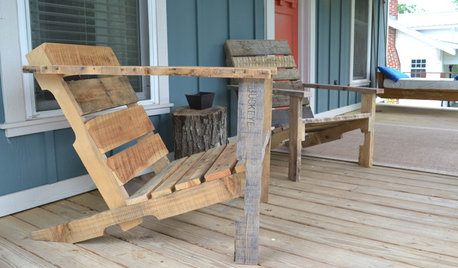
WOODWORKINGBuild Your Own Wooden Deck Chair From a Pallet — for $10!
Take the ecofriendly high road with a low-cost outdoor chair you make yourself
Full Story
PETSWhat Chihuahuas Can Teach Us About Interior Design
Who knew these tiny dogs could be such a huge fount of design tips? Houzzers did
Full Story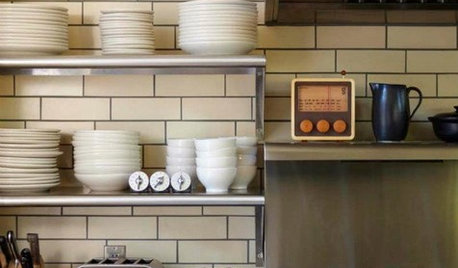
KITCHEN DESIGNCreate Your Own Checklist for a Well-Stocked Kitchen
Personalize the kitchen with your own must-haves from our list of top cooking tools, small appliances, pots, pans and more
Full Story
HOUZZ TVHouzz TV: This Dream Midcentury Home in a Forest Even Has Its Own Train
Original wood ceilings, a cool layout and, yes, a quarter-scale train persuaded these homeowners to take a chance on a run-down property
Full Story
INSPIRING GARDENSWhat We Can Learn From Longwood Gardens’ New Meadow
Sustainability, ecology, native plant communities ... this public garden is brimming with lessons on horticulture for home gardeners
Full Story
SMALL HOMESCan You Live a Full Life in 220 Square Feet?
Adjusting mind-sets along with furniture may be the key to happiness for tiny-home dwellers
Full Story
PETS5 Finishes Pets and Kids Can’t Destroy — and 5 to Avoid
Save your sanity and your decorating budget by choosing materials and surfaces that can stand up to abuse
Full Story
GARDENING GUIDES10 Tips to Start a Garden — Can-Do Ideas for Beginners
Green up your landscape even if you're short on time, money and knowledge, with these manageable steps for first-time gardeners
Full Story
CLOSETSThe Cure for Houzz Envy: Closet Touches Anyone Can Do
These easy and inexpensive moves for more space and better organization are right in fashion
Full Story
MUDROOMSThe Cure for Houzz Envy: Mudroom Touches Anyone Can Do
Make a utilitarian mudroom snazzier and better organized with these cheap and easy ideas
Full Story









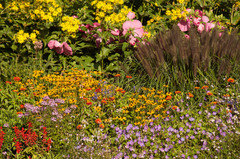
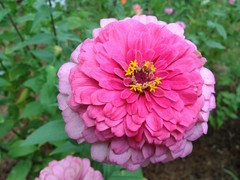




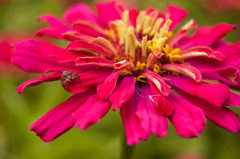

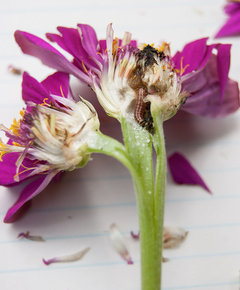

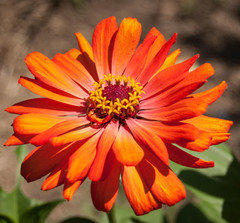




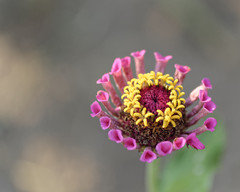


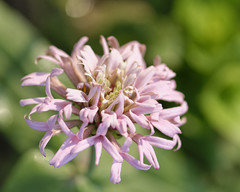



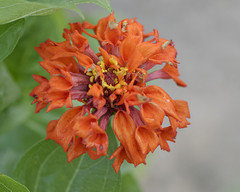







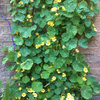
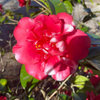
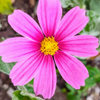
zen_manOriginal Author